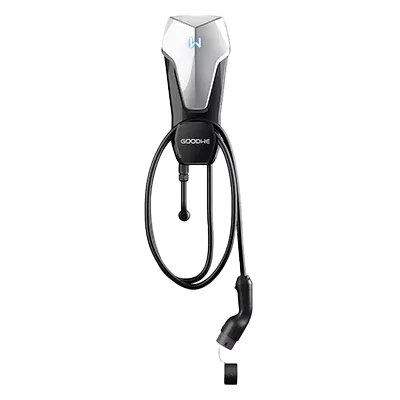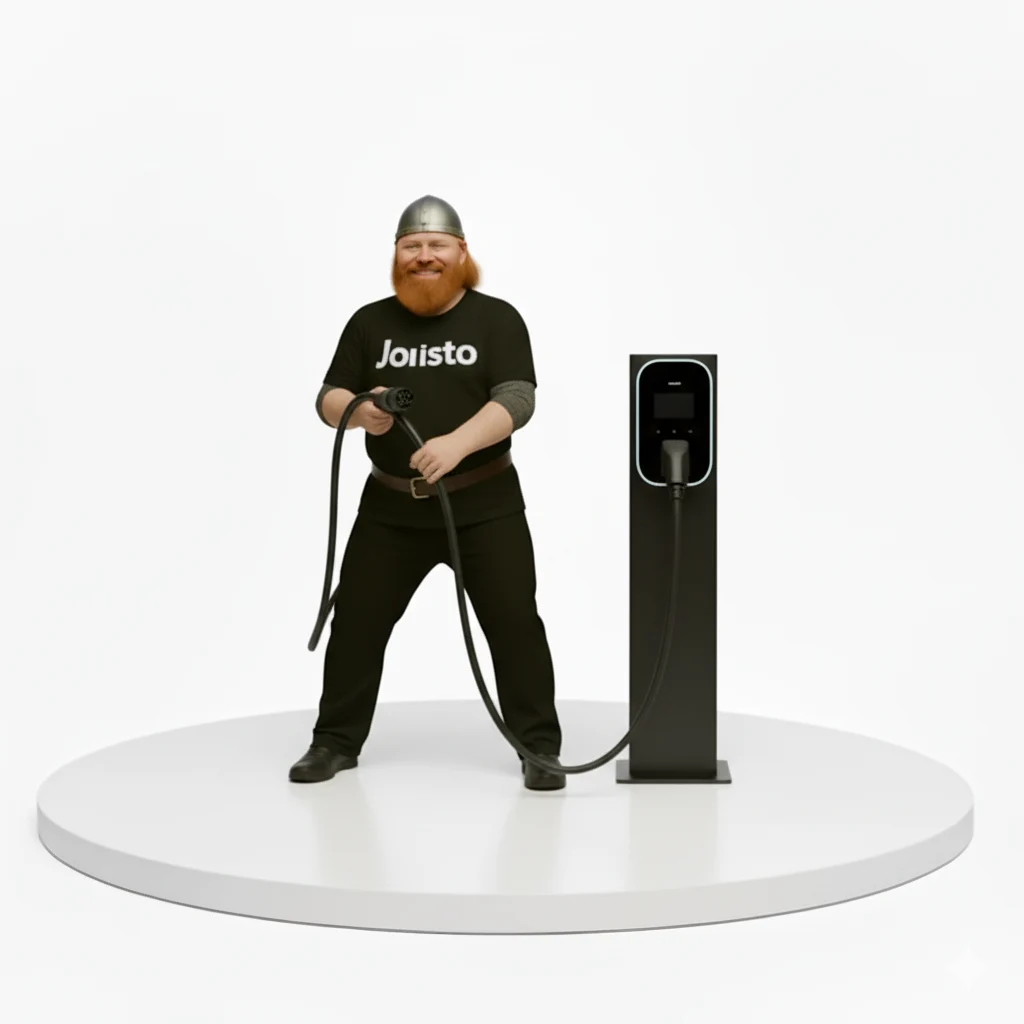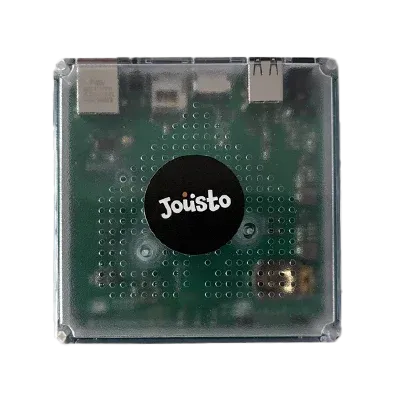
GoodWe EV Charger 7kW
Single-phase AC charger (IP66), perfect for most Aussie homes. Pair with Energy Hub for solar-aware charging.
Choose a charger, add the Jousto Energy Hub to charge from sunshine and cheap off-peak power, then book installation. Simple, smart, and ready for every EV.

Quality hardware, great value — and smarter with the Jousto Energy Hub.

Single-phase AC charger (IP66), perfect for most Aussie homes. Pair with Energy Hub for solar-aware charging.

Faster AC charging for three-phase homes and EVs that support higher rates. Solar-smart with Energy Hub.

Make charging solar-aware on day one. Includes Genius Agent to guide your self-setup & automations.
Learn more about the Jousto Home Assistant Genius.
Choose your charger
Pick 7kW or 22kW GoodWe model.
Add the Energy Hub
$249 with Genius Agent for self-setup.
Checkout online
We’ll confirm details and schedule install.
Charge on sunshine
Smart modes for solar and off-peak.

Negative electricity prices might sound like a strange concept—after all, we are used to paying for electricity, not being paid to use it. However, in certain situations, electricity prices can drop below zero, meaning that power generators are effectively paying consumers to take electricity off the grid.
While this may seem like a financial win for consumers, the reality is more complex. Negative electricity prices are a sign of market imbalances, and they have significant implications for energy producers, businesses, and households.
In this article, we will explain why electricity prices go negative, what happens when they do, and how consumers can take advantage of these rare events.

Electricity prices are determined by supply and demand. Normally, when demand increases, prices rise, and when demand falls, prices drop. However, in some cases, supply can far exceed demand, leading to negative pricing. This happens for a few key reasons:
Renewable energy sources like solar and wind generate electricity whenever conditions allow, regardless of demand. If the grid receives an excess of renewable energy—especially during periods of low demand—prices can drop below zero.
For example:
Solar energy oversupply – On sunny days, solar panels can generate more electricity than is needed, particularly around midday when demand is lower.
Strong wind conditions – Wind turbines continue generating power as long as the wind blows, sometimes producing excess electricity overnight when demand is low.
Since renewable energy has very low operating costs and does not shut down easily, generators may keep supplying electricity even when demand drops, leading to negative pricing.
Some traditional power plants, such as nuclear and coal-fired stations, cannot quickly adjust their output. Unlike gas plants, which can ramp production up and down easily, these facilities may find it more expensive to shut down and restart than to continue running even when demand is low.
As a result, they may sell electricity at negative prices just to keep operating, rather than shutting down temporarily and incurring higher restart costs later.
Electricity demand fluctuates throughout the day and across seasons. Negative pricing is more likely to occur:
At night, when households and businesses use less electricity but some generators continue operating.
On mild weather days, when there is little need for heating or cooling.
During holidays and weekends, when industrial and commercial demand is lower than usual.
Even if there is excess electricity in one region, it cannot always be transported to areas where demand is higher. Grid constraints and transmission bottlenecks can prevent surplus electricity from reaching consumers, causing localised negative pricing.
Some renewable energy generators receive subsidies or incentives for producing electricity, even if there is no demand for it. This means they may continue supplying power even at negative prices because they still receive financial benefits from government schemes or contracts.
When electricity prices go negative, different groups experience different effects. Here’s what happens for various stakeholders:
If you are on a wholesale electricity plan or a dynamic pricing contract, you might actually get paid to use electricity when prices go negative. This can be a great opportunity to:
Charge battery storage systems for later use.
Run high-energy appliances, such as washing machines or electric heaters.
Charge electric vehicles (EVs) at no cost—or even get paid to do so.
However, most residential consumers are on fixed-rate electricity plans, meaning they won’t directly benefit from negative prices unless their provider offers time-of-use pricing.
Battery storage systems, such as those integrated with Jousto, can take full advantage of negative prices by charging when electricity is free or even profitable to store. Later, when prices rise, stored energy can be used instead of drawing from the grid.
For businesses and homeowners with battery storage, this means:
Lower electricity costs overall.
Reduced reliance on the grid during peak pricing periods.
The potential to sell stored energy back to the grid at a profit.
Negative pricing can be problematic for renewable energy producers, especially those without energy storage. In many cases, they may be forced to:
Continue generating electricity at a loss.
Shut down temporarily if possible (which is easier for solar than for wind).
Look for alternative ways to use excess power, such as selling to battery operators or hydrogen producers.
For coal, nuclear, and some gas power plants, negative pricing is a sign of inefficiency. Since these plants cannot quickly reduce output, they may be forced to operate at a loss or pay others to take their electricity. Over time, repeated negative pricing events can make these power stations less viable and accelerate the shift towards more flexible energy solutions.
Energy traders and market operators monitor negative pricing closely. When prices go negative, electricity retailers and large industrial consumers may increase their usage to take advantage of the situation. At the same time, energy storage operators can charge their batteries and prepare to sell electricity back to the grid when prices rise again.
If you are a consumer or business looking to make the most of negative electricity prices, here are some practical steps:
Jousto’s intelligent energy management system can automatically optimise when you consume electricity based on price fluctuations. This ensures you are using or storing electricity at the most cost-effective times.
Battery storage allows you to take full advantage of negative prices by charging when electricity is free and discharging when prices rise. Visit Jousto to learn how battery storage can save you money.
Some energy retailers offer wholesale electricity pricing, which gives consumers direct access to market price fluctuations. This can be beneficial if you have flexible energy usage habits.
If you know when negative pricing is likely to occur, plan high-energy activities such as:
Charging electric vehicles.
Running air conditioning or heating systems.
Operating heavy machinery (for businesses).
Understanding market trends can help businesses and households plan for negative price events. Many energy providers and government websites offer real-time electricity price tracking.
As renewable energy capacity grows and battery storage technology improves, negative electricity prices may become more common. Future developments to watch include:
Better grid management – Smarter energy distribution and demand-response programs will help reduce price volatility.
Wider adoption of battery storage – More homes and businesses investing in energy storage will help stabilise supply and demand.
Dynamic pricing models for consumers – More energy providers may offer flexible pricing plans that allow consumers to benefit from negative prices.
Negative electricity prices are a fascinating aspect of modern energy markets, reflecting the growing influence of renewable energy and the challenges of balancing supply and demand. While they present difficulties for power generators, they offer exciting opportunities for consumers, businesses, and battery storage users.
With the right strategies—such as using energy storage, adopting smart energy management systems like Jousto, and shifting energy usage—consumers can turn negative electricity prices into a financial advantage. As the energy landscape evolves, those who embrace flexibility and innovation will be best positioned to benefit.

© Copyright 2025.Honen Lead Generation.
All Rights Reserved.
Phone: 0489 261 333
185 Morphett St, Adelaide, SA, 5000